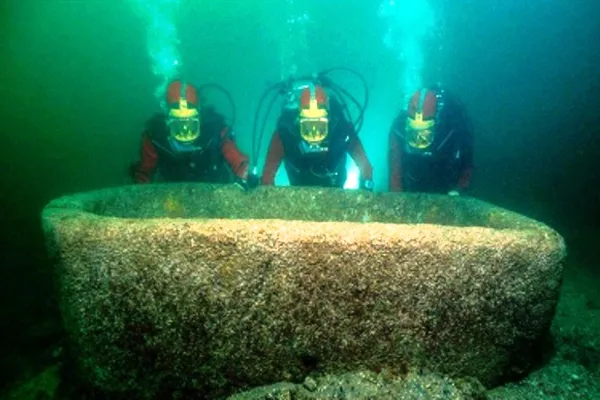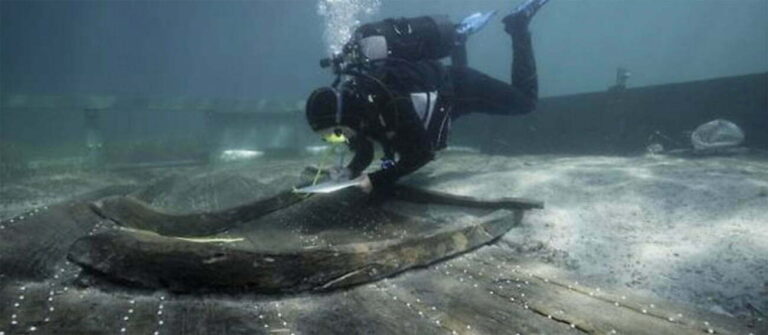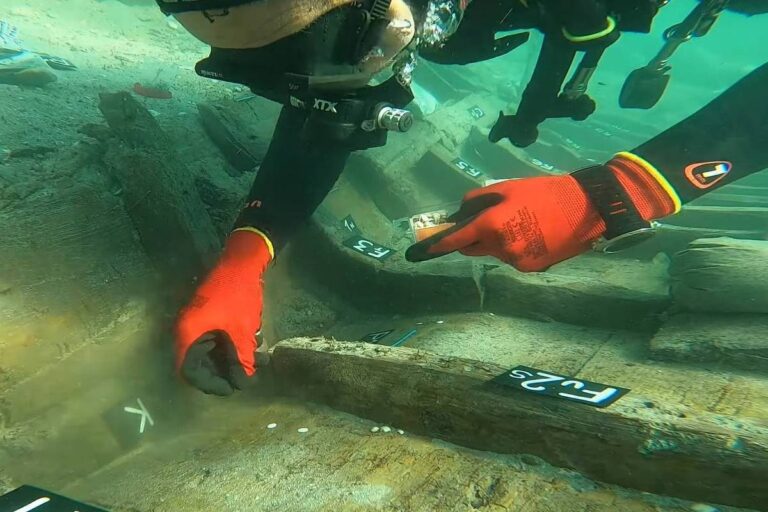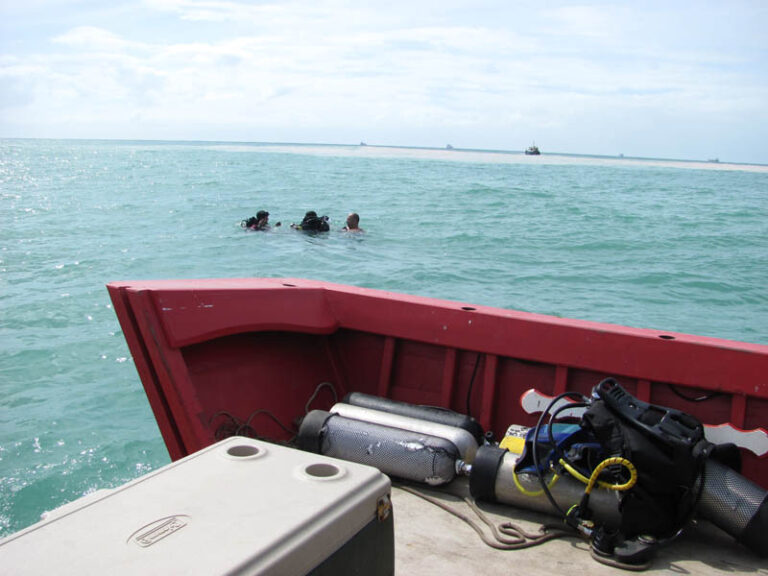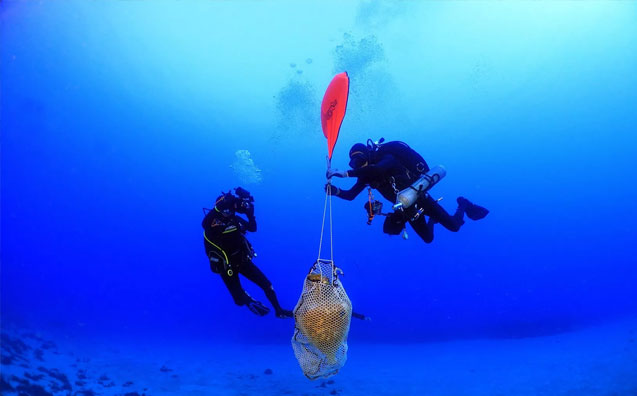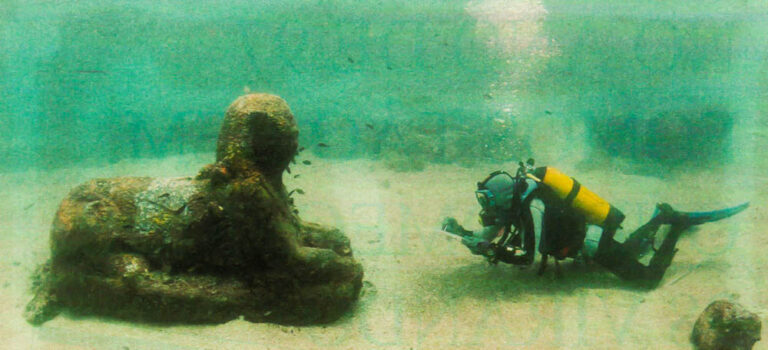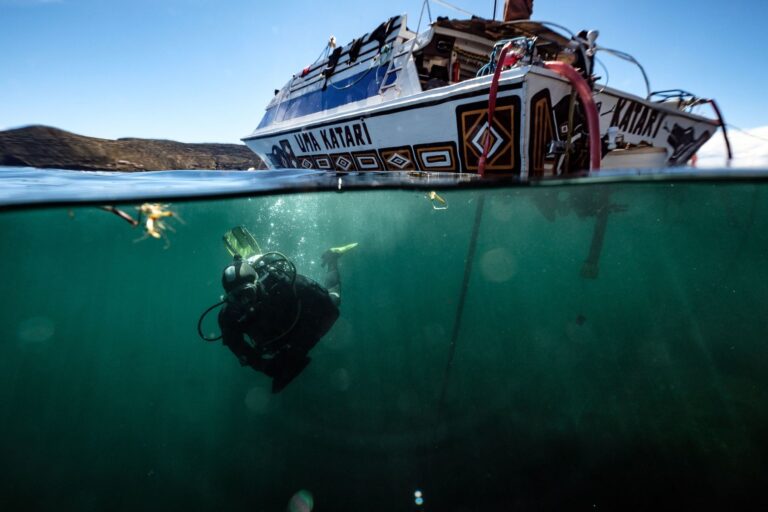Acoustic Survey in Underwater Archaeology: A Detailed Insight
Underwater archaeology plays a crucial role in discovering and studying historical sites hidden beneath the surface of bodies of water. These sites hold valuable insights into the past civilizations and their cultures. However, conducting archaeological surveys underwater poses numerous challenges. Traditional methods can be time-consuming, expensive, and sometimes invasive, limiting the exploration and documentation of these sites.
In recent years, acoustic survey has emerged as a groundbreaking technique in underwater archaeology. By utilizing sound waves, this method allows archaeologists to gather detailed information about submerged archaeological sites in a non-invasive manner. Acoustic survey techniques enable the rapid and efficient coverage of large areas, significantly enhancing the exploration of underwater sites.
Table of Contents
What is Acoustic Survey?
Acoustic survey plays a crucial role in the field of underwater archaeology, as it allows researchers to gather valuable information about submerged archaeological sites. Through the use of sound waves, this groundbreaking technique provides detailed insights into the underwater world, helping to unravel the mysteries of the past.
In acoustic survey, sound waves are used to create images and maps of underwater sites. By emitting sound pulses and measuring their reflections, researchers can determine the shape, composition, and location of submerged structures, as well as identify archaeological artifacts. This non-invasive method has revolutionized the way underwater archaeology is conducted, offering a more efficient and accurate approach to exploration and discovery.
There are various types of acoustic survey techniques commonly employed in underwater archaeology. One of the most widely used methods is side-scan sonar, which uses sound waves to create high-resolution images of the seafloor. Multibeam echo sounders, on the other hand, provide detailed bathymetric data by measuring the time it takes for sound waves to travel to the seafloor and back. Sub-bottom profilers, magnetometer surveys, and remote sensing technologies are also commonly utilized in acoustic survey, each offering unique capabilities to uncover hidden archaeological treasures beneath the surface.
The use of acoustic survey in underwater archaeology has opened up a world of possibilities for researchers. By combining cutting-edge technology with the expertise of archaeologists, this technique enables us to visualize and understand submerged historical sites like never before. It provides a detailed insight into underwater landscapes, allowing us to reconstruct the past and preserve our cultural heritage for future generations.
Note: This response has been generated by an AI language model. While it strives to provide helpful and accurate information, it may not always be perfect. It is recommended to double-check the content and make adjustments as needed.
Advantages of Acoustic Survey in Underwater Archaeology
Acoustic survey in underwater archaeology offers several key benefits that contribute to its growing popularity and effectiveness in the field.
Non-invasive Method: One of the major advantages of acoustic survey is its non-invasive nature, as it allows researchers to gather data from underwater sites without physically disturbing the artifacts or structures. This ensures that valuable historical remnants are preserved and protected for future generations to study and appreciate.
Efficient Coverage: Acoustic survey techniques enable researchers to cover large areas quickly and efficiently. Traditional underwater archaeological surveys can be time-consuming and limited in scope, but acoustic survey provides a means to survey vast underwater landscapes, saving valuable time and resources. This capability allows archaeologists to explore potential sites with greater accuracy and locate hidden treasures that may have been previously overlooked.
High-Resolution Imaging and Mapping: Acoustic survey provides high-resolution imaging and mapping capabilities, allowing for enhanced visualization of submerged structures and artifacts. This detailed imagery provides valuable insights into the layout and composition of archaeological sites, aiding in the interpretation and documentation of historical contexts. Researchers can identify specific features, such as shipwrecks or ancient settlements, with greater precision and clarity, leading to more accurate and comprehensive archaeological records.
Enhanced Visualization: Acoustic survey techniques offer enhanced visualization of submerged structures and artifacts, making it easier for researchers to study and analyze historical sites. By utilizing sound waves, researchers can produce detailed three-dimensional images that reveal hidden details of underwater landscapes. This enhanced visualization allows for a more immersive exploration of underwater sites and aids in the identification and interpretation of archaeological material.
Overall, the advantages of using acoustic survey in underwater archaeology provide researchers with a powerful tool for discovery and exploration. Its non-invasive nature, efficient coverage, high-resolution imaging, and enhanced visualization capabilities make it an invaluable technique in uncovering and studying the submerged heritage of our past. Through continued research and exploration, acoustic survey holds great potential for uncovering new insights and discoveries in the field of underwater archaeology.
Acoustic Survey Techniques in Underwater Archaeology
In the field of underwater archaeology, various acoustic survey techniques are employed to gather essential data about submerged archaeological sites. These techniques utilize advanced technologies to provide detailed insights into the underwater world, helping researchers uncover hidden historical treasures.
Side-scan sonar is one of the most widely used acoustic survey techniques in underwater archaeology. It uses sound waves to create high-resolution images of the seafloor, revealing submerged structures and artifacts. The sonar equipment is towed behind a boat and emits sound pulses that bounce off objects on the seafloor, creating a detailed map of the area.
Multibeam echo sounders are another crucial tool in underwater archaeological surveys. They use multiple beams of sound waves to create a three-dimensional representation of the seafloor. This technique provides researchers with accurate measurements of depth, allowing them to identify underwater features and potential archaeological sites.
Sub-bottom profilers are used to penetrate beneath the seafloor and gather information about the geological layers and sediment deposits. By emitting low-frequency sound waves into the seabed, these profilers can identify buried archaeological sites and detect the presence of cultural artifacts.
In addition to these techniques, magnetometer surveys are employed to detect variations in the Earth’s magnetic field caused by submerged iron objects. This method can help identify shipwrecks or other archaeological sites that contain metal components.
Lastly, remote sensing technologies such as aerial photography and satellite imagery are used in combination with acoustic survey techniques to gain a comprehensive understanding of underwater archaeological sites. Aerial surveys provide a broader view of the underwater landscape, aiding in the identification of potential sites for further investigation.
These acoustic survey techniques revolutionize the field of underwater archaeology, allowing researchers to explore larger areas efficiently and with higher resolution imaging and mapping capabilities. By utilizing these advanced technologies, archaeologists can gain an enhanced visualization of submerged structures and artifacts, leading to significant discoveries and a better understanding of our past.
Case Studies: Successful Applications of Acoustic Survey
Acoustic survey has revolutionized the field of underwater archaeology, enabling researchers to make significant discoveries and gain insights into our rich historical past. This section will showcase some real-life examples where acoustic survey techniques have played a crucial role in uncovering submerged relics and uncovering hidden treasures.
One remarkable application of acoustic survey is in the excavation of ancient shipwrecks. By utilizing side-scan sonar and multibeam echo sounders, researchers can accurately map the seabed and identify potential archaeological sites. These techniques have facilitated the discovery of numerous well-preserved wrecks, shedding light on ancient maritime trade routes and providing invaluable information about ancient civilizations.
Another fascinating use of acoustic survey is in the mapping of submerged cities and settlements. Through the integration of remote sensing technologies and sub-bottom profilers, researchers have been able to create detailed maps of ancient cities that once thrived but now lie beneath the waters. These surveys have provided archaeologists with a glimpse into past civilizations, allowing them to understand the layout and architecture of these lost cities.
Acoustic survey has also proven instrumental in the identification of underwater cultural heritage sites. By employing magnetometer surveys, researchers can detect and locate objects with magnetic properties, such as shipwrecks or submerged structures. This method has led to the discovery of significant cultural heritage sites, preserving our collective history and enabling us to learn more about the practices and lifestyles of our ancestors.
Additionally, acoustic survey has played a vital role in the recovery of important historical artifacts. By employing high-resolution imaging and mapping capabilities, researchers are able to visualize submerged structures and artifacts in great detail. This has facilitated the identification and retrieval of numerous valuable objects, such as ancient pottery, weapons, and even priceless treasures.
These case studies highlight the immense value of acoustic survey in underwater archaeology. By employing non-invasive techniques and utilizing advanced technologies, researchers are able to explore and document submerged archaeological sites with unprecedented precision and efficiency. The advancements in acoustic survey techniques offer immense possibilities for further discoveries and our continuous understanding of our rich historical past. As technology continues to improve, bringing together artificial intelligence, machine learning, and high-resolution imaging, we can expect even more exciting developments in underwater archaeology in the future. The field of acoustic survey holds great potential for unlocking the secrets hidden beneath the waters and providing us with a detailed insight into our past civilizations. Further research and exploration in this realm of underwater archaeology are strongly encouraged to unravel the mysteries lying beneath the surface.
Challenges and Limitations
Interpretation and accuracy of acoustic data
One of the main challenges in acoustic survey in underwater archaeology is the interpretation and accuracy of the acoustic data collected. While acoustic survey techniques provide high-resolution imaging and mapping capabilities, interpreting the data accurately can be a complex task. It requires experts with a deep understanding of the underwater environment and archaeological structures. Mistakes in interpretation can lead to incorrect conclusions or missed discoveries.
To address this challenge, researchers and archaeologists constantly strive to improve their interpretation skills and ensure accuracy in the analysis of acoustic data. Collaboration between experts in different fields, such as archaeology, acoustics, and image processing, is crucial to validate and cross-reference the findings. Developments in machine learning and artificial intelligence algorithms are also expected to enhance the interpretation of acoustic data in the future.
Environmental factors affecting survey results
Another limitation faced in acoustic survey is the influence of environmental factors on the survey results. Underwater conditions can vary greatly, which can impact the quality and effectiveness of the acoustic survey techniques used. Factors such as water turbidity, hydrological conditions, and seabed composition can affect the propagation and interpretation of sound waves in the underwater environment.
To mitigate this challenge, researchers need to carefully consider the environmental conditions during the survey planning and analysis stages. They need to account for variables that may affect the accuracy and reliability of the acoustic data. Some techniques, such as side-scan sonar, allow for real-time adjustments to compensate for changes in environmental factors. Continuous advancements in sensors and data processing tools also contribute to better coping with these challenges.
Cost and availability of equipment and expertise
Acoustic survey techniques require specialized equipment and expertise, which can present challenges in terms of cost and availability. The high-tech equipment used in acoustic survey, such as side-scan sonar and multibeam echo sounders, can be expensive to acquire, maintain, and operate. Additionally, expertise in underwater archaeology and acoustics is necessary to ensure the proper implementation of these techniques.
To overcome this limitation, collaboration between research institutions, government agencies, and private organizations becomes crucial. Sharing resources and knowledge exchange can help to alleviate the financial burden and increase accessibility to advanced acoustic survey equipment. Furthermore, investing in training and education programs can help build a skilled workforce capable of conducting acoustic surveys effectively.
In conclusion, despite the numerous advantages of acoustic survey in underwater archaeology, there are also challenges and limitations to consider. The accurate interpretation of acoustic data, the impact of environmental factors on survey results, and the cost and availability of equipment and expertise are some of the main challenges faced by researchers. However, with ongoing advancements in technology and collaboration between different fields, these challenges can be overcome, paving the way for further discoveries and advancements in underwater archaeology.
Future Possibilities and Advancements
In the realm of underwater archaeology, the future holds immense potential for the advancement of acoustic survey techniques. With the rapid progress in technology, researchers and archaeologists are exploring innovative ways to further enhance the capabilities of acoustic surveys in discovering and studying submerged historical sites. There are several exciting possibilities on the horizon, including the integration of artificial intelligence (AI) and machine learning, advancements in high-resolution imaging and data processing, and improved underwater acoustic mapping technologies.
Integration of artificial intelligence and machine learning is set to revolutionize the field of underwater archaeology. By utilizing AI algorithms and machine learning models, archaeologists can streamline the process of analyzing vast amounts of acoustic data collected from underwater surveys. These intelligent systems can assist in identifying and classifying submerged artifacts and structures, thus saving valuable time and resources. Additionally, AI-powered algorithms can contribute to the development of predictive models, enabling researchers to better understand the distribution and formation of underwater archaeological sites.
Advancements in high-resolution imaging and data processing will significantly enhance the capabilities of acoustic surveys in underwater archaeology. Researchers are constantly striving to improve the clarity and detail of the images obtained through acoustic techniques, allowing for a more accurate interpretation of submerged environments. By harnessing cutting-edge technologies, such as advanced signal processing algorithms and high-resolution sonar systems, archaeologists will be able to visualize underwater sites with unprecedented clarity and precision.
Furthermore, improved underwater acoustic mapping technologies have the potential to unlock new possibilities in the field of underwater archaeology. These advancements aim to enhance the efficiency and accuracy of surveying large areas, enabling archaeologists to cover more ground in less time. Additionally, the development of faster and more precise mapping techniques will provide archaeologists with a more comprehensive understanding of submerged landscapes, leading to the discovery of previously unknown underwater archaeological sites.
In conclusion, the future of acoustic survey techniques for underwater archaeology looks promising. The integration of artificial intelligence and machine learning, advancements in high-resolution imaging and data processing, and improved underwater acoustic mapping technologies are set to shape the field’s landscape. With these new capabilities, researchers can expect to make groundbreaking discoveries, uncover hidden historical treasures, and gain deeper insights into our past. It is imperative for the scientific community to continue to invest in research and exploration in the realm of acoustic survey for underwater archaeology to fully realize its potential.
Conclusion
In conclusion, acoustic survey has proven to be a groundbreaking technique in the field of underwater archaeology. It has revolutionized the way we discover and study historical sites that are submerged underwater. Through the use of sound waves, acoustic survey allows researchers to gather valuable information about these submerged archaeological sites, making it an essential tool for underwater exploration.
The advantages of using acoustic survey in underwater archaeology are numerous. One of the key benefits is that it provides a non-invasive method to gather data from underwater sites. Traditional archaeological surveys often involve physically excavating sites, which can be time-consuming and destructive. Acoustic survey, on the other hand, allows researchers to gather information without disturbing the underwater environment.
Another advantage of acoustic survey is its ability to cover large areas quickly and efficiently. This is particularly useful when dealing with vast underwater landscapes or when time is a constraint. Acoustic survey techniques such as side-scan sonar and multibeam echo sounders enable researchers to create detailed maps and high-resolution images of submerged structures and artifacts, providing a visual representation of the underwater archaeological sites.
Several successful applications of acoustic survey in underwater archaeology serve as real-life examples of its significance. Excavations of ancient shipwrecks, mapping of submerged cities and settlements, identification of underwater cultural heritage sites, and recovery of important historical artifacts are all made possible through the use of acoustic survey techniques.
However, it’s important to acknowledge the challenges and limitations associated with acoustic survey. The interpretation and accuracy of acoustic data can sometimes be a complex process, and environmental factors can affect the survey results. Additionally, the cost and availability of equipment and expertise can pose as obstacles for researchers.
Looking into the future, there are exciting possibilities and advancements on the horizon for acoustic survey in underwater archaeology. The integration of artificial intelligence and machine learning, advancements in high-resolution imaging and data processing, and improved underwater acoustic mapping technologies hold great potential for further enhancing the capabilities of acoustic survey techniques.
In conclusion, acoustic survey has proven to be an invaluable tool in underwater archaeology. Its non-invasive nature, quick coverage of large areas, high-resolution imaging capabilities, and ability to visualize submerged structures and artifacts make it a game-changer in the field. Therefore, it is crucial to encourage further research and exploration in the realm of acoustic survey for underwater archaeology, as it holds the potential for future discoveries that can significantly contribute to our understanding of the past.

